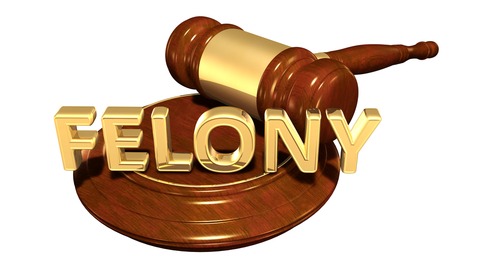Exploring Alternative Sentencing Options in New York: A Fresh Perspective for Criminal Defense
When it comes to criminal sentencing, New York is a state renowned for its openness to innovation and progressive strategies. While traditional punishment methods have long prevailed, there is a growing recognition that alternative sentencing options can provide a fresh perspective on justice, rehabilitation, and community reintegration. With its diverse communities and complex social dynamics, New York offers a unique backdrop for exploring paths beyond conventional forms of punishment.
Navigating the Complexities of the Legal System with a Seasoned Criminal Defense Firm.
Facing criminal charges in the bustling city of New York requires the support of a seasoned criminal defense firm that understands the intricacies of the legal system. At our leading criminal defense firm in New York, we are committed to advocating for alternative sentencing options that may be available to our clients. With a deep understanding of New York law and an unwavering dedication to our clients’ rights, we strive to provide comprehensive representation that goes beyond traditional defense strategies.
Exploring Alternative Sentencing Possibilities for Rehabilitation and Community Reintegration
Our firm recognizes the importance of exploring all avenues when defending our clients. In collaboration with them, we delve into the realm of alternative sentencing possibilities, aiming to minimize the impact of criminal charges and seek resolutions that prioritize rehabilitation and community reintegration. One such option we explore is diversion programs, which offer qualifying individuals the opportunity to avoid traditional criminal prosecution by participating in rehabilitative interventions tailored to their specific needs.
Restorative Justice Focuses
As part of our commitment to alternative sentencing, our firm actively explores restorative justice initiatives. By engaging all parties involved, including victims, offenders, the district attorneys office, and the community, restorative justice focuses on repairing the harm caused by criminal behavior. Through dialogue, mediation, and restitution, it seeks to address the needs of victims, promote accountability for offenders, and foster healing within the community.
Tailoring Strategies to Unique Circumstances and Goals
In addition to diversion programs and restorative justice, our firm explores other alternative sentencing options, such as community service, probation, or specialized treatment programs. We understand that each case is unique, and we are dedicated to tailoring our strategies to the specific circumstances and goals of our clients. By thoroughly investigating available options and leveraging our extensive network of resources, we aim to present compelling arguments for alternative sentencing to prosecutors and judges, seeking fair and just resolutions that promote rehabilitation.
Contact Our New York Criminal Defense Firm Today
When facing criminal charges in New York, it is crucial to have a criminal defense firm that not only possesses legal expertise but also embraces alternative sentencing possibilities. With our deep understanding of New York law, compassionate approach, and unwavering dedication to our clients’ well-being, we stand ready to explore paths beyond traditional punishment. Contact our criminal defense firm in New York today, and let us embark on a journey towards justice, rehabilitation, and a second chance.
When it comes to alternative sentences, there are various options that can be considered for a defendant. In certain cases, New York judges may demonstrate creativity by imposing multiple alternative sentences or crafting a new sentence that is tailored to match the specific nature of the crime committed. Alternative sentencing can encompass a range of possibilities, which may include one or more of the following
1. Probation: If sentenced to probation, the defendant is permitted to reenter the community under specific restrictions. Regular meetings with a probation officer and compliance with all conditions outlined in the probation orders will be required.
2. Community Service: In lieu of jail time or as an addition to another alternative sentence, low-level crimes may be assigned community service. This involves performing specific tasks or activities that benefit the community.
3. Restitution: The court may order the defendant to provide monetary compensation to the victim(s) affected by their crime. This serves as a way to restore or make amends for the harm caused.
4. Fines: Another form of alternative sentence is the imposition of fines, where the defendant is required to pay a specified amount of money to the court as a consequence of their actions.
5. Suspended Sentencing: A judge has the discretion to suspend a sentence either unconditionally, without any further requirements, or conditionally, with specific stipulations that must be met. Failure to meet these stipulations may result in the lifting of the suspension and activation of the original sentence.
6. Deferred Adjudication: Similar to suspended sentencing and probation, deferred adjudication necessitates the defendant proving to the court that they can act as a law-abiding citizen. The court monitors the defendant’s progress and may pursue adjudication if the criteria established for the sentence are not met. These alternative sentencing options are just a few examples of the possibilities that exist in New York criminal cases.
7: Diversion Programs: In some cases, New York offers diversion programs as an alternative to traditional sentencing. These programs are designed to address the underlying issues that may have contributed to the defendant’s criminal behavior. Diversion programs can include substance abuse treatment, mental health counseling, or educational programs aimed at reducing recidivism and promoting rehabilitation.
8: House Arrest: Instead of serving time in jail, a defendant may be placed under house arrest. This alternative sentence allows the individual to remain at home but restricts their movements through electronic monitoring. Violation of the terms of house arrest can result in more severe consequences.
9: Drug Courts: For defendants struggling with substance abuse issues, drug courts provide an alternative approach to traditional sentencing. These specialized courts focus on rehabilitation rather than punishment, offering defendants the opportunity to undergo intensive treatment, counseling, and regular drug testing. Successful completion of a drug court program can lead to reduced charges or dismissal of the case.
10: Youthful Offender Status: In certain cases involving young offenders, New York provides the option for youthful offender status. This alternative sentence aims to protect the future prospects of young individuals by sealing their criminal records and offering them a chance to rehabilitate and reintegrate into society.
11:Conditional Discharge: With a conditional discharge, the court imposes certain conditions that the defendant must adhere to during a specified period. These conditions can include attending counseling, maintaining employment, or participating in community service. If the defendant complies with the conditions, the charges may ultimately be dismissed.
At Ilganayev Law Firm, PLLC, our experienced team of criminal defense attorneys in New York is well-versed in navigating the intricacies of alternative sentencing. We understand the importance of assessing each client’s unique situation and advocating for the most appropriate alternative sentence that aligns with their circumstances. By exploring the available alternatives, our firm aims to secure resolutions that prioritize rehabilitation, community reintegration, and a fresh start for our clients. Contact us today for a confidential consultation and let us guide you through the complexities of alternative sentencing.
FAQS
- What are alternative sentencing options in New York?
- In New York, alternative sentencing options are alternatives to traditional incarceration that aim to rehabilitate offenders and reduce overcrowding in jails and prisons. These options can include probation, community service, drug treatment programs, electronic monitoring, and specialized courts such as drug courts or mental health courts.
- Who is eligible for alternative sentencing in New York?
- Eligibility for alternative sentencing in New York is determined on a case-by-case basis. Factors such as the nature of the offense, the offender’s criminal history, and their willingness to participate in rehabilitative programs are taken into consideration. Certain offenses, such as violent crimes or repeat offenses, may limit eligibility for alternative sentencing.
- How does probation work in New York?
- Probation is a form of alternative sentencing where an individual is allowed to serve their sentence in the community under the supervision of a probation officer. The individual must comply with specific conditions, such as regular check-ins, drug testing, and participation in counseling or treatment programs. Failure to comply with the conditions may result in further legal consequences.
- What is community service as an alternative sentencing option?
- Community service involves performing unpaid work for a specified number of hours as a form of alternative sentencing. Offenders are typically required to complete tasks that benefit the community, such as cleaning public spaces, assisting in nonprofit organizations, or providing support in local events.
- Are there specialized alternative sentencing programs in New York?
- Yes, New York has specialized alternative sentencing programs, such as drug courts and mental health courts. These courts focus on addressing the underlying issues that contribute to criminal behavior, such as substance abuse or mental health issues. Offenders are provided with treatment, support, and supervision to aid in their rehabilitation.
- Can alternative sentencing options be combined in New York?
- Yes, alternative sentencing options can be combined in New York, depending on the circumstances of the case and the needs of the individual offender. For example, an offender may be placed on probation while also participating in a drug treatment program or community service.
- How can I find information about alternative sentencing programs in my area?
- You can contact your local probation department, public defender’s office, or court system to inquire about alternative sentencing programs available in your area. They can provide you with information about eligibility, program requirements, and how to apply.
- Are there any limitations or restrictions on alternative sentencing options in New York?
- While alternative sentencing options offer alternatives to incarceration, there are still limitations and restrictions. The court will consider the seriousness of the offense, the individual’s criminal history, and the potential risk to the community when determining eligibility for alternative sentencing. Some offenses, such as violent crimes or certain felonies, may not be eligible for certain alternative sentencing options.
- What types of offenses are typically eligible for alternative sentencing in New York?
- Offenses eligible for alternative sentencing in New York can vary, but generally, non-violent offenses or offenses where rehabilitation is deemed appropriate are more likely to be considered for alternative sentencing. Examples include drug possession, low-level property crimes, and certain white-collar offenses.
- Is alternative sentencing available for juvenile offenders in New York?
- Yes, New York has alternative sentencing options available for juvenile offenders. The state recognizes the importance of rehabilitation for young offenders and offers programs such as juvenile probation, community-based programs, and counseling services specifically tailored to address the unique needs of juvenile offenders.
- Can alternative sentencing options be used for repeat offenders in New York?
- Repeat offenders may still be considered for alternative sentencing in New York, depending on the nature and severity of the offenses. While some alternative sentencing options may be limited for repeat offenders, there are still programs and options available that focus on rehabilitation and reducing recidivism rates.
- Are there any financial costs associated with alternative sentencing in New York?
- In some cases, there may be financial costs associated with alternative sentencing in New York. For example, individuals on probation may be required to pay fines, fees for supervision, or restitution to victims. However, the financial obligations are typically assessed based on the individual’s ability to pay.
- What happens if an individual violates the conditions of their alternative sentencing in New York?
- If an individual violates the conditions of their alternative sentencing in New York, consequences can vary. Depending on the severity of the violation, the court may modify the conditions, impose stricter supervision, or revoke the alternative sentencing and impose traditional incarceration.
- Are there any programs specifically designed for individuals with substance abuse issues in New York?
- Yes, New York has alternative sentencing programs specifically designed for individuals with substance abuse issues. Drug courts, for example, offer treatment, counseling, and support services as an alternative to incarceration for individuals struggling with substance abuse.
- Can alternative sentencing options in New York be used for individuals with mental health issues?
- Yes, New York recognizes the importance of addressing mental health issues in the criminal justice system. Mental health courts provide alternative sentencing options for individuals with mental health issues, offering treatment, counseling, and support services instead of traditional incarceration.
Conclusion
In recent years, alternative sentencing options have gained recognition and acceptance as a more effective and humane approach to addressing criminal behavior in New York. These alternatives not only provide offenders with an opportunity for rehabilitation and personal growth but also contribute to reducing the burden on the criminal justice system and easing prison overcrowding. One of the key benefits of alternative sentencing is its focus on addressing the underlying causes of criminal behavior. By providing access to substance abuse treatment, mental health services, vocational training, and educational programs, alternative sentencing aims to equip individuals with the tools they need to reintegrate into society successfully. By addressing these underlying issues, alternative sentencing programs have shown promising results in reducing recidivism rates and promoting long-term positive change.
Moreover, alternative sentencing options can be more cost-effective compared to traditional incarceration. Incarceration comes with substantial financial burdens, including the costs of housing, feeding, and providing healthcare to inmates. Alternative sentencing options, on the other hand, tend to be less costly, as they prioritize community-based supervision and treatment programs. This allows the allocation of resources to be directed towards rehabilitation and support services, which have the potential to yield better outcomes in terms of reducing future criminal activity.
New York’s commitment to alternative sentencing is evident in the establishment of specialized courts, such as drug courts and mental health courts. These courts provide a more tailored and comprehensive approach to addressing the specific needs of individuals struggling with substance abuse or mental health issues. By diverting these individuals away from the traditional criminal justice system and towards treatment and supportive services, these specialized courts offer a more compassionate and effective way of addressing the underlying causes of their criminal behavior.
In conclusion, alternative sentencing options in New York have emerged as a progressive and effective approach to addressing criminal behavior. By focusing on rehabilitation, addressing underlying issues, and providing access to support services, these alternatives offer individuals a chance to turn their lives around and reintegrate into society successfully. They not only benefit the individuals involved but also contribute to a more efficient and humane criminal justice system overall. As alternative sentencing continues to evolve and expand, it is crucial to prioritize evidence-based practices and ongoing evaluation to ensure the best possible outcomes for both the individuals involved and the communities they return to.
For more information and to read our other blog posts, click here!
ATTORNEY ADVERTISING. This blog post is provided for informational purposes only and does not constitute legal advice. For specific legal guidance related to your situation, please consult with an attorney. Prior results do not guarantee a similar outcome.



